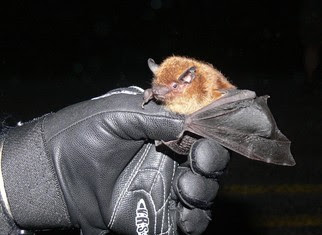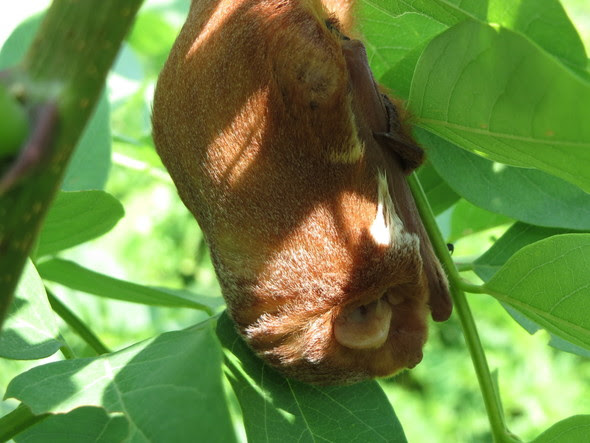 In popular culture, bats are creatures to be feared, especially this time of year with their association with Halloween and all things spooky. It’s perhaps not surprising that they have this reputation. Bats are only active at night and usually appear as indistinct shapes fluttering in the moonlight. OR they are huddling together in dark, dank places like caves, and abandoned buildings. Or perhaps, they’ve taken up residence in your attic!
In popular culture, bats are creatures to be feared, especially this time of year with their association with Halloween and all things spooky. It’s perhaps not surprising that they have this reputation. Bats are only active at night and usually appear as indistinct shapes fluttering in the moonlight. OR they are huddling together in dark, dank places like caves, and abandoned buildings. Or perhaps, they’ve taken up residence in your attic!
In reality, though, bats are not something to be afraid of or grossed out by. As a fellow bat enthusiast friend of mine calls them, they are actually adorable “sky puppies”, who are the only North American mammal that has truly mastered flight and who spend most of their time sleeping or eating literal tons of insects, many of which are agricultural and human pests. We actually have a lot to thank bats for!
What I find scary is the rate at which we are losing bats. For three species, Tri-colored, Little Brown and Northern Long-eared bats, it is estimated we have lost 90% of their population in the U.S. in the last 10 years. For these three species, the bulk of the declines are attributed to an introduced disease called White Nose Syndrome. Another group of migratory bat species, Hoary, Silver-haired and Red bats, have trouble navigating around wind turbines and are killed by them at a concerning rate.
The good news is that a lot of great work is occurring right now to solve these two threats to bats, so their situation may be able to turn back positive in the near future. Iowa landowners, especially those with forest land, can also help these species by reducing invasive species, like honeysuckle and buckthorn in the understory, planting or supporting loose bark trees such as shagbark hickory and white oak, and finally leaving dead trees standing rather than cutting them down.

It's Bat Week!
Every year, the week leading up to Halloween is designated as Bat Week, which gives us the opportunity to celebrate bats and the important role they play in our world!
Hopefully at this point you’re feeling a little friendlier towards Iowa’s “sky puppies” and to help a little more, here are ten fun facts about bats in Iowa and beyond.
- There are nine species of bat that call Iowa home, including all 6 of the species mentioned above. Five of these species are hibernators (live in Iowa year-round) and four are migratory and head for warmer climes as soon as it starts getting too cold for insects to be active.
- Bats and Halloween? In Iowa, bats are typically hibernating or on their way south by October 31st so you are not likely to see many bats on Halloween unless they are made of plastic!
- Risk of Rabies. Most wildlife can carry disease and many mammals can be carriers of rabies. Only a very small percentage of bats carry rabies so the risk of contracting rabies from a bat is also small. However, you should always be cautious if you come into contact with a bat! Do not handle them or any wild animal. If you have come into contact with a bat or any animal you think may be rabid, contact the Iowa Department of Health for next steps.
- Bats are surprisingly long-lived for a small mammal, living, on average, 15-30 years depending on the species. In addition, bat mom’s only raise 1-4 young per year.
- A bat’s favorite night out? Eating as many moths and mosquitos as they can catch! A single colony of big brown bats can reduce the corn rootworm population in an area by 33 million.
- Echolocation! This is a form of sonar that bats have developed that helps them navigate and hunt for insects in the dark. Contrary to popular belief, bats are not blind but echolocation really gives them a boost.
- Iowa’s hibernating bats breed in the fall, but females do not become pregnant until Spring after they come out of hibernation.
- Speaking of hibernation, bats need a humid spot with a steady temperature that hovers around 30-45 degrees Fahrenheit, which is why caves often fit the bill.
- The highest diversity and abundance of bats in Iowa occurs in Eastern Iowa, where there is more forested land and most of Iowa’s caves can be found.
- Can bats turn into vampires? No.
Believe it or not, bats make our world a better place! So, this year I hope you will join me in sending a little love and gratitude their way. Or if love is perhaps a little too far, at least some respect. And maybe plant a tree or two while you are at it!